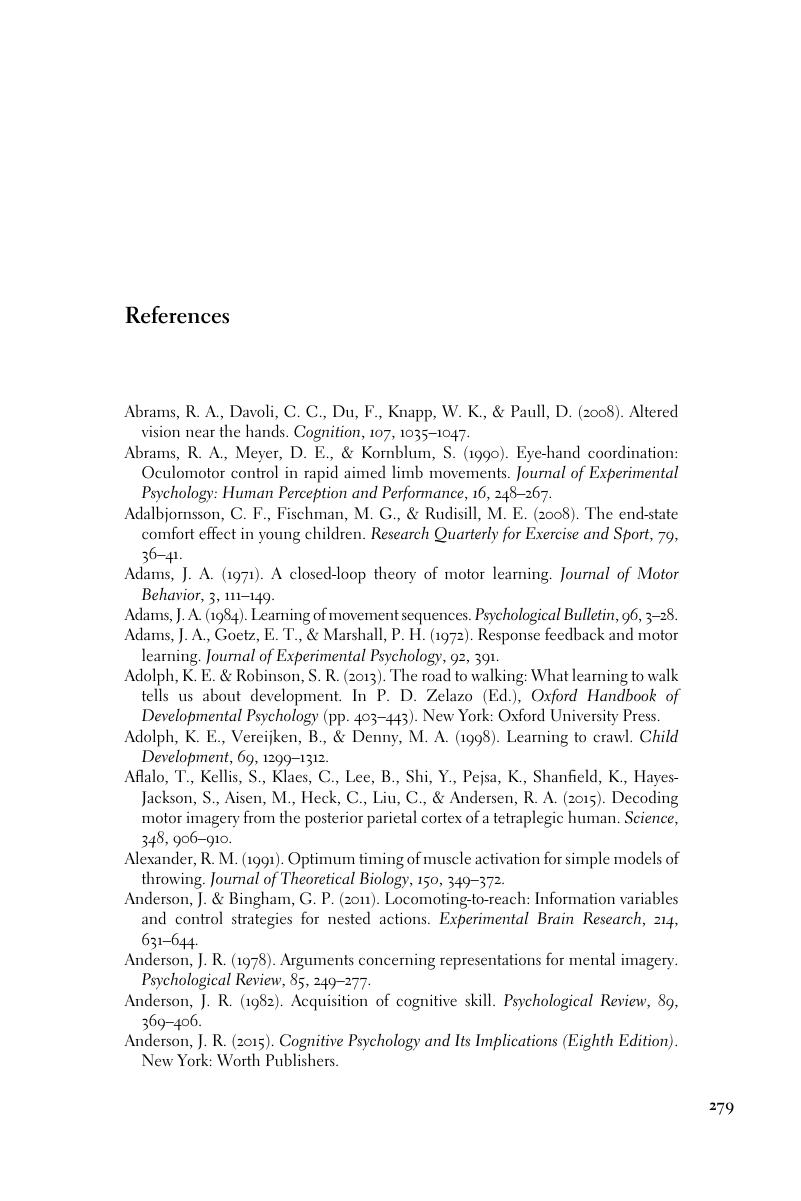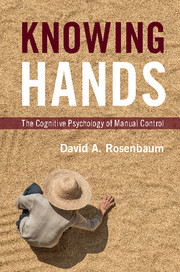Book contents
- Knowing Hands
- Knowing Hands
- Copyright page
- Dedication
- Contents
- Preface
- Chapter 1 Introducing Hands
- Chapter 2 Building Hands
- Chapter 3 Energizing Hands
- Chapter 4 Willing Hands
- Chapter 5 Seeing Hands
- Chapter 6 Hearing Hands
- Chapter 7 Feeling Hands
- Chapter 8 Joining Hands
- Chapter 9 Extending Hands
- Notes
- References
- Index
- References
References
Published online by Cambridge University Press: 24 March 2017
- Knowing Hands
- Knowing Hands
- Copyright page
- Dedication
- Contents
- Preface
- Chapter 1 Introducing Hands
- Chapter 2 Building Hands
- Chapter 3 Energizing Hands
- Chapter 4 Willing Hands
- Chapter 5 Seeing Hands
- Chapter 6 Hearing Hands
- Chapter 7 Feeling Hands
- Chapter 8 Joining Hands
- Chapter 9 Extending Hands
- Notes
- References
- Index
- References
Summary

- Type
- Chapter
- Information
- Knowing HandsThe Cognitive Psychology of Manual Control, pp. 279 - 312Publisher: Cambridge University PressPrint publication year: 2017



